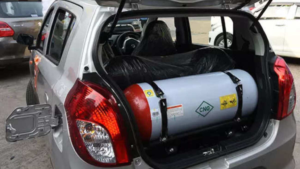
The hidden costs of economic advancement are often overlooked in the rush and bustle of modern life. An unpleasant truth that can be seen behind the shiny exteriors of factories and warehouses is industrial pollution. The effects of industrial activity on the environment can be astounding, ranging from poisonous runoff to nauseating smells. There is, nevertheless, a gleam of light amid the darkness. We can give everyone a better, cleaner future by being proactive in reducing pollution.
Industrial Pollution’s Cost
Let’s face the unpleasant reality of industrial pollution before we look at potential solutions. Imagine a cityscape covered in a heavy layer of pollution, the air burning your lungs with each breath and tasting like sulfur. Imagine waterways that were once crystal-clear but are now choked with chemical waste, a muddy stew of toxins. This is the terrible legacy of unbridled industrialization, a heritage that puts our health and well-being in jeopardy along with the environment.
Encouraging Transformation: Doable Actions to Reduce Pollution
Industrial pollution presents formidable obstacles, but they are not insurmountable. We can reduce pollution and protect our world for future generations by working together and making a commitment to change.
Here are some doable actions we can apply:
1. Adopting Sustainable Practices:
Adopting sustainable practices is one of the best strategies to cut down on industrial pollution. This might include making investments in energy-efficient technologies, eco-friendly production practices, or renewable energy sources like solar or wind power. The environmental impact of industrial activity can be greatly reduced by minimizing resource usage and reducing our dependency on fossil fuels.
2. Tightening Environmental Regulations:
Although individual initiatives are crucial, strong environmental regulations are also required. Establishing and upholding regulations for pollution management is primarily the responsibility of governments and regulatory agencies. Regulators may hold polluters accountable and encourage the adoption of cleaner technologies by enforcing tight emissions limits, penalizing non-compliance, and encouraging responsible waste management practices.
Read Also: Impacts of industrial pollution on Climate Change
3. Encouraging Circular Economy Principles:
Encouraging circular economy principles is another important tactic for reducing industrial pollution. This entails creating goods and procedures with the goal of reducing waste and optimizing the use of resources. We can limit the environmental impact of industrial activities and reduce the quantity of waste they generate by promoting the reuse, recycling, and repurposing of resources.
4. Investing in Technologies for Monitoring and Controlling Pollution:
Technological developments have given us access to effective instruments for keeping an eye on and managing pollution. Industries may track and reduce their environmental effect with the use of a wide range of technology, from wastewater treatment systems to air quality sensors. Businesses can minimize pollution and cut emissions by investing in these technologies and implementing them into their operations.
5. Promoting Cooperation and Knowledge Exchange:
Lastly, tackling industrial pollution necessitates cooperation amongst all parties involved, including corporations, governments, and local communities. Through promoting communication and information exchange, we can find novel approaches and industry-replicable best practices. We may make a lasting difference and optimize our effect by cooperating to achieve a common objective.
Final Thoughts: An Appeal for Action
In summary, industrial pollution is a serious problem that needs to be addressed. It is imperative that we take action. We can reduce the environmental impact of industrial activities and leave a cleaner, healthier planet for future generations by adopting sustainable practices, enforcing stricter environmental regulations, advocating for the circular economy, investing in pollution monitoring and control technologies, and encouraging cooperation and knowledge sharing. Now is the moment to take action. Together, let’s clear the air and make way for a more promising and sustainable future. Let’s get our hands dirty.








